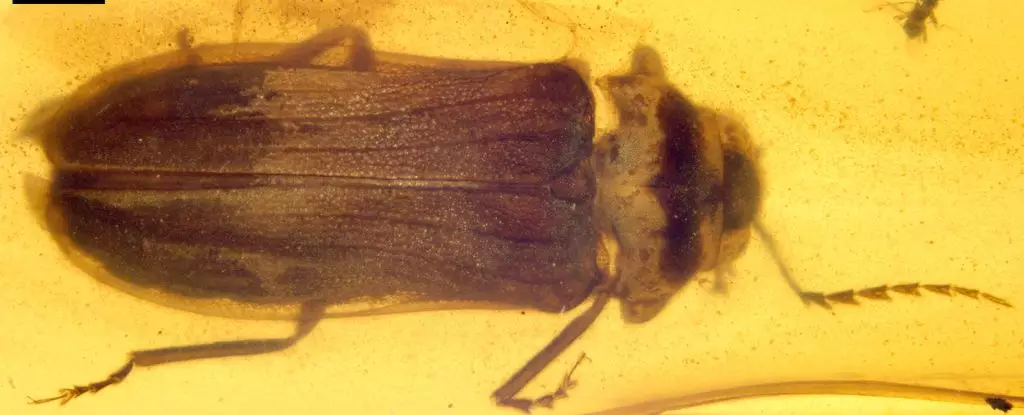As dusk settles across the landscape, the soft, twinkling luminescence of fireflies paints a magical picture—a dance of lights that captivates the observer’s imagination. These remarkable insects are a significant part of our ecosystem, with around 2,500 species identified globally. Fireflies, classed as bioluminescent beetles, exhibit a fascinating glow generated by chemical reactions within their bodies. Despite their ubiquity, the origins of this bioluminescence—a feature that profoundly shapes their interactions with the environment—remain a topic of scientific curiosity.
The Discovery of Flammarionella hehaikuni
A breakthrough in understanding the evolution of firefly bioluminescence comes from an extraordinary discovery made by a team led by paleontologist Chenyang Cai from the Chinese Academy of Sciences. The team stumbled upon a remarkably preserved specimen of a firefly named *Flammarionella hehaikuni* within a piece of 99-million-year-old amber, found in Kachin State, Myanmar. This fossil challenges our understanding of the evolutionary timeline of fireflies, indicating that the capacity for bioluminescence may have developed much earlier than previously believed.
The identification of *Flammarionella hehaikuni* isn’t merely an increment in fossil finds; it signifies an evolutionary milestone. This firefly species was already exhibiting its characteristic glow during the Mesozoic era, hinting at a long-standing adaptation that has persisted for millennia. Notably, the fossil acts like a time capsule, capturing the essence of its era while simultaneously illustrating an evolutionary lineage marked by diverse adaptations in bioluminescence.
The evolution of *Flammarionella hehaikuni* complements the discovery of another Mesozoic firefly, *Protoluciola albertalleni,* also found in amber from the same region. Together, these finds offer a glimpse into the past, suggesting that by 99 million years ago, bioluminescence in insects was not only developed but also exhibited significant variation among species. Such findings raise intriguing questions regarding the ecological roles these glowing adaptations played in their environments.
The differing structures of these fireflies’ “lanterns” further support the idea of an evolutionary arms race, where various species develop unique methods to attract mates or deter predators. While bioluminescence is primarily linked to courtship rituals, it also serves as a warning signal to potential predators regarding toxins like lucibufagins. This dual utility underscores the complexities of these insects’ ecological interactions, showcasing the necessity for ongoing research in understanding the evolutionary pressures that continue to shape them.
Delving deeper, *Flammarionella hehaikuni* exhibits distinctive physical traits that pave the way for further inquiries into insect evolution. For instance, the specimen’s antennae are adorned with hair-like structures known as setae, which possess deep, oval indentations. Though these characteristics are not seen in modern fireflies, they hint at adaptations for mate recognition, suggesting that complex chemical communication systems likely have ancient roots.
The antennae’s structure also emphasizes the necessity for further investigations into sexual dimorphism within this species. Males of many firefly species are known for their flamboyant antennae, which often play a crucial role in attracting females. Discovering a male specimen of *Flammarionella* could potentially illuminate the evolutionary narratives underpinning the divergence between male and female traits in fireflies.
The sediment-rich amber containing *Flammarionella hehaikuni* provides an exquisite view into a world that existed millions of years ago. However, it also opens the door to new questions regarding the evolutionary features of fireflies. While the excitement surrounding this discovery is palpable among scientists and enthusiasts alike, it remains essential to continue seeking out additional fossilized fireflies and their relatives. Each new finding could refine our understanding of bioluminescence’s evolutionary journey, unravel complexities we have yet to grasp, and ultimately deepen our appreciation for these mesmerizing creatures that illuminate our summer nights.


Leave a Reply